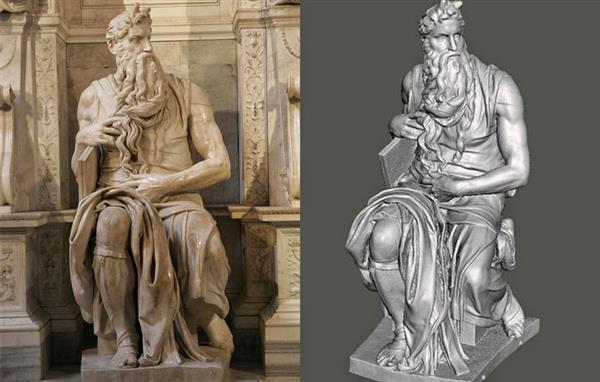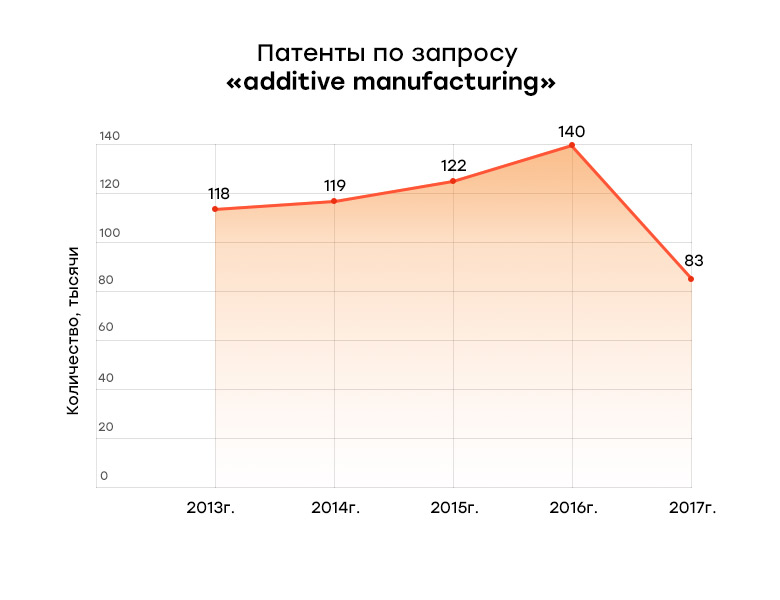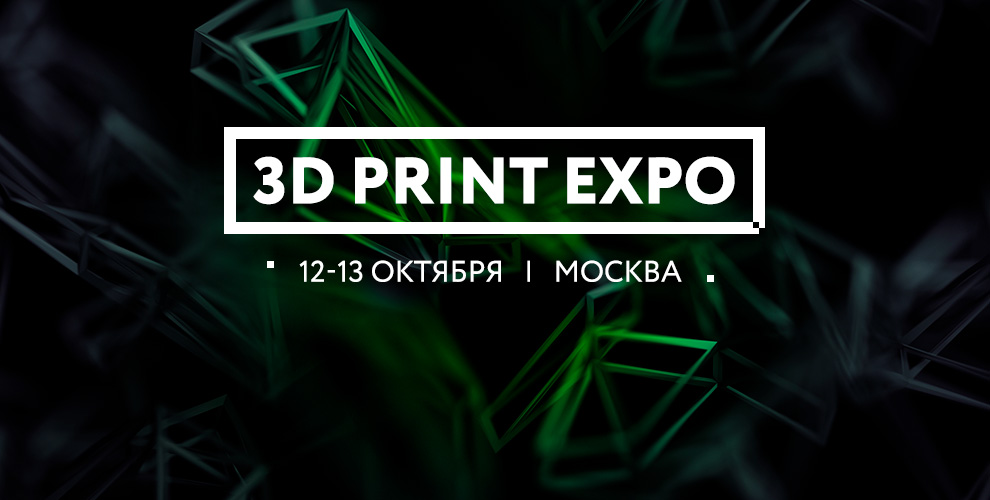Copies and copyrights: how patent and copyright influence the development of 3D printing

Copies of copies for which University of Augustine filed a lawsuit against Jerry Fisher.
3D printing enthusiasts were looking forward to 2014: it was then that the patent for the method of selective laser sintering (laser printing technology for 3D printing of products from dry mixtures) expired. This method brought to the owners of the patent, the company 3D Systems , fame and billions in profits; it was used in architecture, engineering, aerospace and in the creation of art objects. As the experts predicted, after the patent expired, there was a real boom in the application of the method: manufacturers began to experiment with technology, new printers appeared, the market became more competitive, and equipment fell in price.
This is just one vivid example of the influence of patent law on the state of the industry. Since 2014, additive manufacturing has experienced a real inventive boom, marked by tens of thousands of patents granted. Now this boom seems to be over. The industry is moving to something new.
3D printing today: how the industry is developing
The report of the resource ificlaims.com, the largest private database of published patents, shows that in the USA over the past 5 years (from 2013 to 2017) the number of patents in the field of additive technologies has grown by about 35% every year. In 2017, the US patent office issued over 320 thousand certificates, which was a new record. Larger growth was shown only by the electronic cigarette industry (45% per year); close to the result of approaching machine learning technology (an increase of 34% per year).
World statistics roughly corresponds to US data, but the absolute record in it belongs to 2016. The search engine Google Patents for this period issues data on 140 thousand patents containing the words “additive manufacturing” and 46 thousand - with the words “3d printing”.


In 2017, the “inventive boom” went into decline, and in 2018 (compared to the same period last year) it completely dried up. Probably, the inventors invented and patented everything that was possible, and now went directly to the development of serial models of printers. As experience shows, it usually takes several years from the registration of a patent to the launch of a product on the market.

Ekaterina Abashina, media jurist, expert of the Digital Rights Center:
Patenting in the field of additive manufacturing is subject to the general rules for patenting inventions, utility models and industrial designs. Various speculative things are not protected by copyright (for example, ideas, concepts, solutions of technical, organizational and other tasks and other objects specified in paragraph 5 of article 1259 of the Civil Code of the Russian Federation). The object of the patent, depending on the type, must have certain qualities: to be innovative and industrially applicable (an invention or utility model, for which 1 and 3 characteristics are enough), and an industrial design must be new and original in its essential features.
Who seeks the leaders?
The top 5 “patent champions” from IFC looks curious: it includes General Electric, Xerox, Boeing, Desktop Metal and Hewlett-Packard Development. Only the fourth company specializes in 3D printers; the rest produce office equipment, various electronics and airplanes. This is probably due to the fact that large companies have more opportunities for research, and they always seek to consolidate their intellectual rights.
Developments in the field of 3D printing are government. So, the US Army Corps of Engineers recently patented3D printing technology for prefabricated concrete buildings. Innovation here lies in the fact that concrete has not previously been used for additive methods in construction: it strongly litters the nozzles. But at the same time, concrete is much stronger, which gives it an advantage. Military engineers have developed special liquid additives for the concrete mix, which allow it to be used in a 3D construction printer. Last year, the Engineering Corps introduced a 47.5 m 2 hut printed from construction mix and announced the development of a new powerful 3D construction printer in collaboration with NASA.
Disputes over patents
Competition among manufacturers of 3D printers is intensifying, and this sometimes turns into detective stories - with espionage and court intervention.
At the beginning of 2017, Markforged introduced the Metal X printer, after which a lawsuit was filed against Desktop Metal (both from the United States, Massachusetts). The plaintiffs accused competitors of violating their two patents on key nodes of printers. The lawsuit included a suspicion of industrial espionage: the brother of a Markforged employee used to work for Desktop Metal. The trial lasted about a month; as a result, the defendant was found not guilty.
The company Formlabs is also known for its litigation. In 2016, she received a claim from EnvisionTEC (USA) for violating two patents. The plaintiff said he wanted to ban the sale of two Formlabs, Form 1 and Form 2 printers using the stereolithography method (or SLA). Previously, the company had already been sued by another giant of 3D printing equipment - 3D Systems. The matter was decided out of court, with the result that Formlabs decided to pay 8% of net sales as a refund.
Despite the fact that back in 2015, analysts predicted an invasion of “patent trolls” into the 3D printing industry, until these fears were met. But this can only be a matter of time.
Ekaterina Abashina:
Cases with patent trolls in 3D printing have not come across to me yet, but I think the most fertile ground for them will be design objects (industrial designs): it is easier to get or redeem a patent than to invent them.
And what about copyright?
Where duplication of objects or information occurs, copyright disputes inevitably arise. There are first case law with 3D printing.
In 2012, US citizen Thomas Valenti, who created a miniature based on Warhammer’s game on a 3D printer, received an invitation to court from the rights holders of Games Workshop.
The owners of the game did not like the fact that Valenti laid out the models for free access, and they demanded that the files be deleted. The court sided with Warhammer: the files were deleted.
Three years later, the University of Augustus (South Dakota, USA) filed a lawsuit against Jerry Fisher, a 3D print enthusiast who digitized the sculptures on the building of the university and laid out their models for public access. The piquancy of the situation was that the statues were not original: these are bronze copies of Michelangelo's works. The college demanded a ban on the digitization of statues and the removal of their models from the site. After passing several courts, Jerry Fisher achieved the abolition of the ban.
Catherine Abashina:
When assessing the legality of the use of works, it is important to consider:
- is the author alive and how many years have elapsed since his death (that is, the duration of the exclusive right);
- goals and ways of using the work (commercial or personal, educational, scientific, etc.);
- whether or not there is written consent to use from the copyright holder (if such consent is necessary).
These are anchor points, not to retell all nuances. Simply put, if a sculptor is alive, and you decide to print his sculptures and sell them without his permission and contract, this will be a violation of copyright (with consequences in the form of compensation and compensation for damage and lost profits).
Digitization of the work and distribution of models in the network can be interpreted as a way to use the copyright object, so even without printing anything on a 3D printer, you can violate the rights of the copyright holder.
Michelangelo’s sculptures have definitely been transferred to the public domain for a long time and can be used without any difficulty.
Recall that the term of copyright protection expires 70 years after the death of the author. Therefore, the works of classical sculptors who lived before 1948 can be digitized and used for any purpose - including commercial ones. The copyright and patent rights in the 3D printing industry will be one of the topics at the 3D Print Expo . Ekaterina Abashina will tell the visitors about the exhibition. Full lecture program

